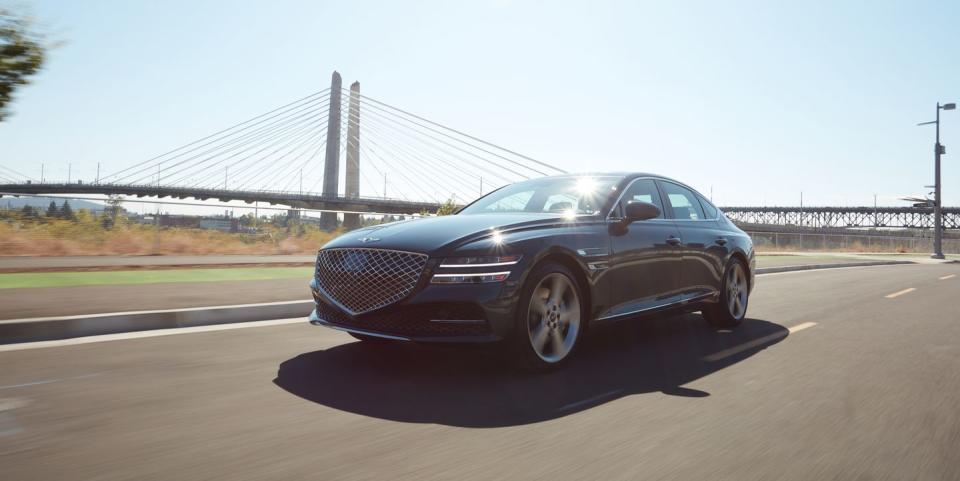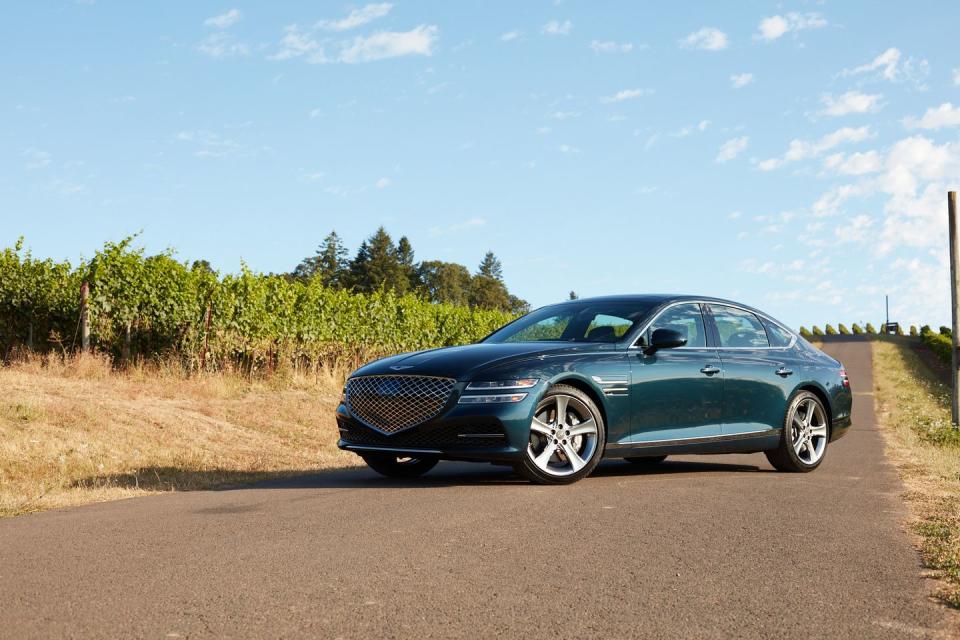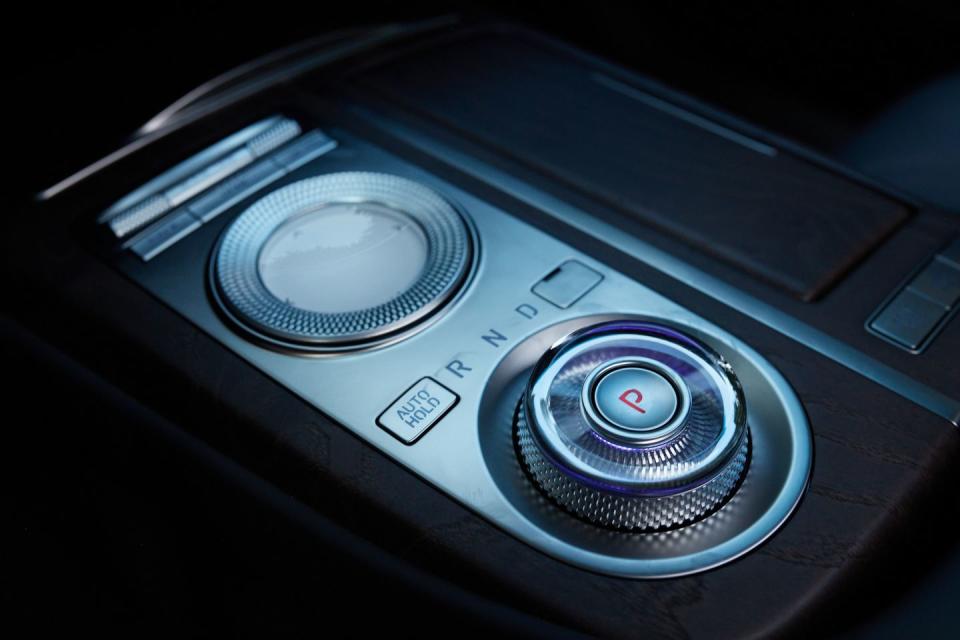The Third Gen 2021 Genesis G80 Rides on a New Platform Named M3

The 2021 Genesis G80 sedan, expected to arrive in showrooms as you read this, rides on a new platform named M3. It is Genesis,’ and indeed parent company Hyundai’s, first rear-wheel-drive based platform made to build an SUV upon, as this is also the foundation for the GV80. Compared to the outgoing G80 platform, Genesis claims M3 is lower, wider, has a lower center of gravity and is lighter.
To start, Genesis used aluminum to make 19 percent of the M3 platform to save 243 pounds, if those same components were made from steel. For the GV80 version of the M3 platform, aluminum is used for the hood, doors, and tailgate to save a total of 255 pounds, based on the same comparison. Furthermore, the strut brace as well as front and rear shock towers are also aluminum.
There are also several grades of steel. Compared to outgoing G80 platform, M3 has a 6% higher tensile strength thanks to using more high-strength steel, including in both the a and b pillars, floor cross-members and rocker panels. Different grades of high-strength steel are also used in the cowls, floor panels, and transmission tunnel. Furthermore, the new rear sub-frame is more rigid and uses larger bushings for improved NHV, according to Genesis. Overall, torsional rigidity increases three percent and the platform weighs 55 lbs less than the outgoing one.
And it holds up a beautiful car. Among its contemporaries at least, the large crest grille and narrow quad headlamps fall on the tasteful and elegant side of the ostentatiousness spectrum. In profile, you see Genesis followed the heard to a more fast-back style sloped roof, but, critically, kept the lines clean. And the small lip spoiler in back blends in more than it stands out.

Look carefully back there and you’ll find the trunk release button neatly tucked away just above the rearview camera and finished in silver like the surround trim to avoid drawing any extra attention. Sadly, its also the same finish the faux tailpipes receive. No, the real exhaust pipes are not crest shaped and more than six inches long.
Regardless of actual diameter, those tailpipes emit exhaust from a turbocharged 2.5-liter inline-four-cylinder, which produces a peak 300 horsepower at 5,800 rpm and 311 lb-ft of torque between 1,650 – 4,000 rpm. Many base engines in the premium midsize segment do with less. But if you want more, Genesis also offers a twin-turbocharged, 3.5-liter V6 producing 375 horsepower also at 5,800 rpm and 391 lb-ft of torque between 1,300 – 4,500 rpm.
Either engine makes use of an eight speed automatic transmission. And both engines can send power to either the rear or all four wheels. In fact, Genesis plans to make 40 percent of G80s all-wheel-drive. And Genesis plans to make more of them with the 2.5-liter I4 than the 3.5-liter V6.
Inside, Genesis likes to use the phrase, “beauty of white space.” The interior is clean, not cluttered, and elegant, with nice wood, leathers, and ambient light. You get a nice silver rimmed, clear and lit dial to replace your classic PRNDL and an original iPod (remember those?) style push pad with a rotary dial around the perimeter to manage various infotainment features.

Such features are on display on extra wide screens. The instrument cluster, itself, is a 12.3-inch screen. And resting on top of the dash in the center is a 14.5-inch screen to observe climate control settings, navigation, and the rest. I must say I liked the detail of a displayed blue sky as background as the temperature and radio appeared on the left hand side, which faded into the NAV screen on the right. Having an ultra wide screen affords you such luxuries.

 Yahoo Autos
Yahoo Autos 